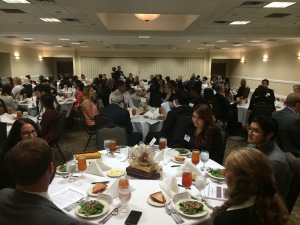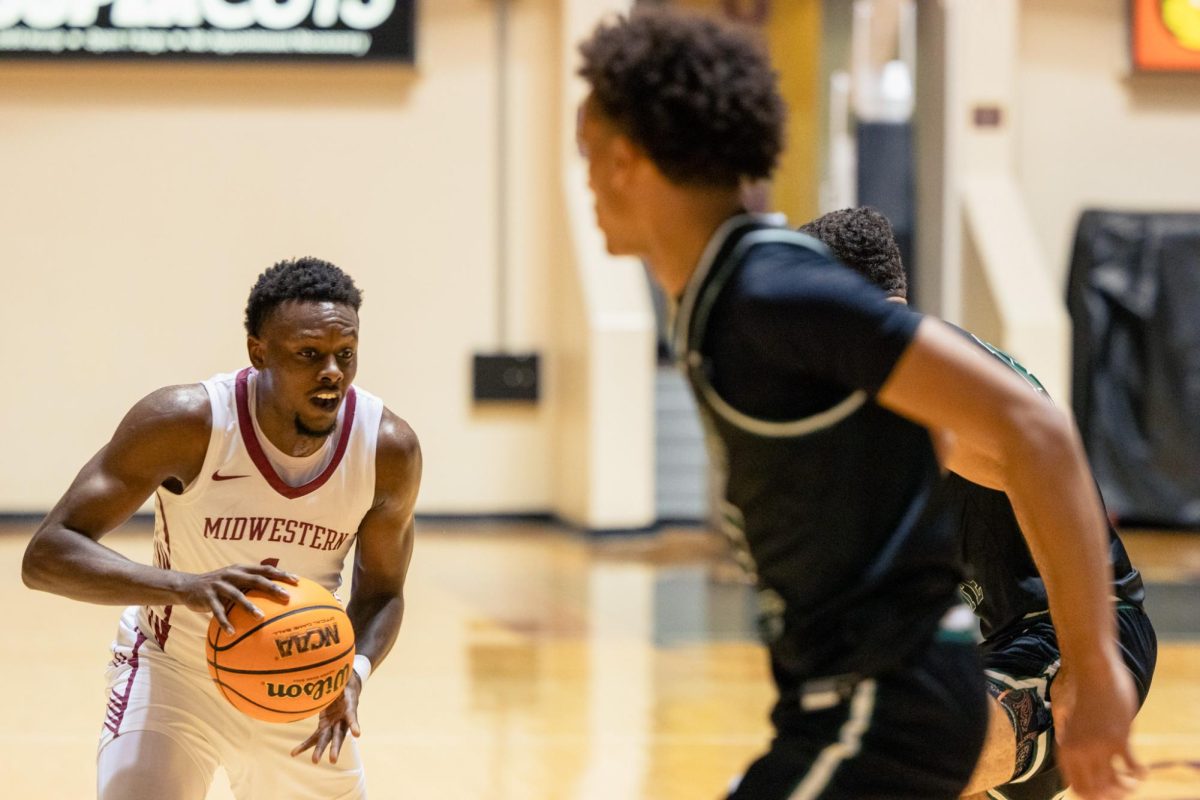
The Dillard College of Business Administration and Career Management Center hosted the seventh annual business etiquette dinner in the Comanche Suites on Oct 18. Attended by more than 100 people, the instructional dinner helped inform students on what to do and what not to do at an important dinner.
Kennard Hill, former chairman of the Dillard Business Administration said, “I have been to all of the business etiquette dinners and from the first dinner there has been an increase in the number of students who participate in the dinner and that is a great thing to see.”
“Students should take advantage of this opportunity because business dinners can be a vital role when meeting people, you want to be prepared and comfortable with eating and socializing with others, it will just make things easier in the future to understand common etiquette boundaries,” Hill said.
The beginning of the dinner was uptight and most paid attention to the instructions being given, but Hill said people should relax when going to a dinner because it should be enjoyable and conversation needs to keep flowing.
“I have been to a couple dinner meetings that were agonizing because of the awkward silence and you could feel the tension, all I could think of was getting out of the dinner as soon as possible. You want to try and socialize as much as possible even though it might seem nerve racking at times,” Hill said.
Being on time is an important part of the dinner and proper attire is needed for most business meetings. Men’s attire should consist of slacks, dress shoes, button up shirt, sport coat, and a tie. For women, they should have dress shoes, silk or polyester shirt, dress pants, and they can even go with a nice business dress for the meeting or interview.
Janice Buss, coordinator of the instructional dinner, walked people through the steps during the dinner and gave out many details on the process of eating.
“Condiments are the first to be passed around the table starting with the person closest to them and then should be passed around to the right,” Buss said.
The hostess is always the first one to start eating first, it tells the others that it is time to start digging into their plate
“When using eating utensils, both the knife and the fork need to be pointed down when cutting into food and once you start cutting, you do not want to grind the knife back and forth, slice each piece of food going forward and bring it back and repeat until you have cut a couple of pieces to eat,” Buss said.
It is proper to only cut a couple of pieces that you are going to eat and if you want more you can go back and cut a couple more.
Rhea Spencer, finance junior said, “Leading up to this dinner I had no idea what to do at the dinner table, I am so used to eating in comfortable places like my house and it is a major transition coming here tonight.”
Spencer said the positions of the knife and fork were the most intriguing to her because she was not accustom to eating that way.
“It was a little nervous when eating my salad because I was being so gentle with my knife and I found myself stabbing at the salad constantly and couldn’t get anything on my knife and I felt like people could see me struggle with my food,” Spencer said.
Once the meal was under way, the dinner was more relaxed and conversation started to pick up.
“The first couple of minutes I thought I was in for a tense dinner focusing more on the food than the people sitting next to me, the sponsor of the table started great conversation and that eased my mind a little bit and from that point I was lot more comfortable and the etiquette part of the dinner was a breeze,” Spencer said.
Buss said, “When someone is finished with dinner it is proper to always leave food on the plate when finished.”
Eating all of the food or eating only a small amount of food can be an insult to the cook because it can say that the person did not get enough food to satisfy or they did not like the meal given to them.
“By looking at your fellow peers, you can tell when a good stopping point is when it comes to finishing a meal, it is very important to leave the eating utensils in a straight line in the middle of the plate to let the waitress or waiter know you are finished,” Buss said.
Amy Hanaley, sophomore in business information systems said, “This dinner will be resourceful to me in the future in many ways because I had an idea of what a business dinner should be like but there were small details that about the dinner that I didn’t know before.”
“I plan on attending the next dinner and will encourage some other people to attend also,” Hanaley said.
Hanaley said now that she is educated on table manners she feels confident for future job interviews or meetings if she needs to meet for lunch or dinner.
















